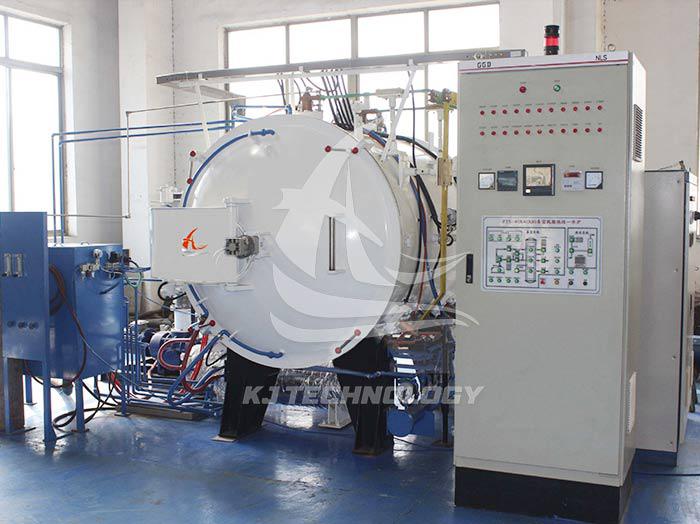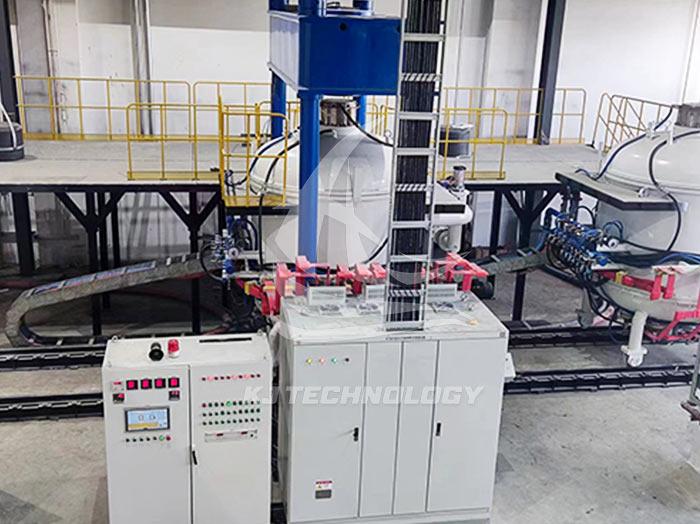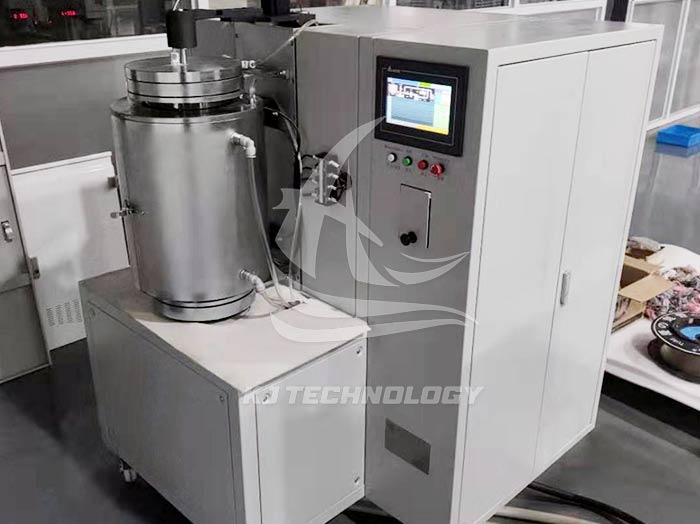Can a large-sized furnace vacuum heat treatment furnace be used for sintering?
 09-29-2025 Author: KJ technology
09-29-2025 Author: KJ technology
The large-sized furnace vacuum heat treatment furnace can be fully used for sintering processes and has significant advantages in processing large-sized or batch workpieces. Its technical principles, equipment design, and practical applications all support this conclusion. The following is a specific analysis:
1. Technical feasibility: Compatibility between vacuum environment and sintering principle
Core requirements for sintering
Sintering is the process of heating to cause diffusion and bonding between powder particles, ultimately forming a dense material. The key conditions include:
Temperature control: It needs to reach 50% -70% of the material's melting point (such as metal powder usually requires 800-1500 ℃).
Atmosphere control: Avoid oxidation, decarburization, or impurities to ensure material purity.
Pressure control: Some processes require the application of pressure (such as hot pressing sintering) to promote densification.
Advantages of Vacuum Environment
No oxidation, no pollution: No oxygen participates in the reaction under vacuum, avoiding surface oxidation or decarburization of materials, especially suitable for sintering high-purity metals (such as titanium alloys, stainless steel) or ceramics (such as silicon nitride, silicon carbide).
Degassing effect: Vacuum environment can remove gases (such as adsorbed hydrogen and water vapor) between powder particles, reduce the porosity of sintered bodies, and improve density.
Uniform heating: Large furnace with zone temperature control technology can ensure temperature uniformity (within ± 5 ℃) inside the furnace, avoiding uneven sintering caused by local overheating or underheating.
2. Equipment adaptability: design advantages of large-sized furnaces
Ability to handle large workpieces
Large furnaces (such as those with a diameter of 2 meters or more and a height of 3 meters or more) can directly accommodate oversized workpieces such as aircraft engine blades, large molds, and wind turbine spindles, without the need for cutting or batch processing, reducing process costs and time.
Batch processing efficiency
When the furnace volume is large, multiple small and medium-sized workpieces (such as automotive gears and bearing rings) can be loaded simultaneously. Through reasonable placement and process optimization, batch sintering can be achieved to improve production efficiency.
Specialized Function Design
Pressure system: Some large-sized vacuum furnaces are equipped with electric hydraulic pressure devices, which can achieve hot pressing sintering and further improve material density.
Multi layer material rack: Multi layer material racks or rotating tables are designed inside the furnace to ensure stable position of the workpiece during sintering and avoid deformation caused by gravity or thermal expansion.
Rapid cooling: Some equipment integrates gas quenching or oil quenching systems, which quickly cool after sintering to fix the structure and improve material properties.
3. Application case of typical sintering process
Powder metallurgy sintering
Applicable materials: Iron based, copper based, stainless steel powder, hard alloy (such as WC Co).
Process parameters: Heat to 1100-1300 ℃, hold for 2-4 hours, and then cool with the furnace.
Effect: Obtain high-density parts for direct mechanical processing, reducing subsequent cutting volume.
Ceramic material sintering
Applicable materials: silicon nitride (Si ∝ N ₄), aluminum oxide (Al ₂ O ∝), silicon carbide (SiC).
Process parameters: Heat to 1600-1800 ℃, hold for 4-6 hours, and then cool slowly.
Effect: Eliminating internal pores in ceramics, improving fracture toughness, suitable for high wear resistant scenarios such as cutting tools and bearings.
Composite material sintering
Applicable materials: metal based composite materials (such as Al ₂ O3/Al), ceramic based composite materials (such as SiC/SiC).
Process parameters: staged heating (such as 800 ℃ degassing, 1200 ℃ sintering), combined with pressure loading.
Effect: Achieve good interface integration and improve material comprehensive performance (such as strength and heat resistance).
4. Application scenarios and economic benefits
High end manufacturing field
Aerospace: Sintering of engine turbine discs and combustion chamber components to avoid oxidation failure during high-temperature service.
Energy: Sintering of wind turbine spindles and nuclear power valves to improve material toughness.
Mold: Sintering of large die-casting molds and plastic molds to extend their service life.
cost saving
Reduce subsequent processing: After sintering, the surface is smooth and can be directly used for precision machining, improving material utilization.
Reduce scrap rate: no oxidation defects, improve product qualification rate.
Energy saving and consumption reducing: Efficient insulation design reduces energy consumption per unit output.








